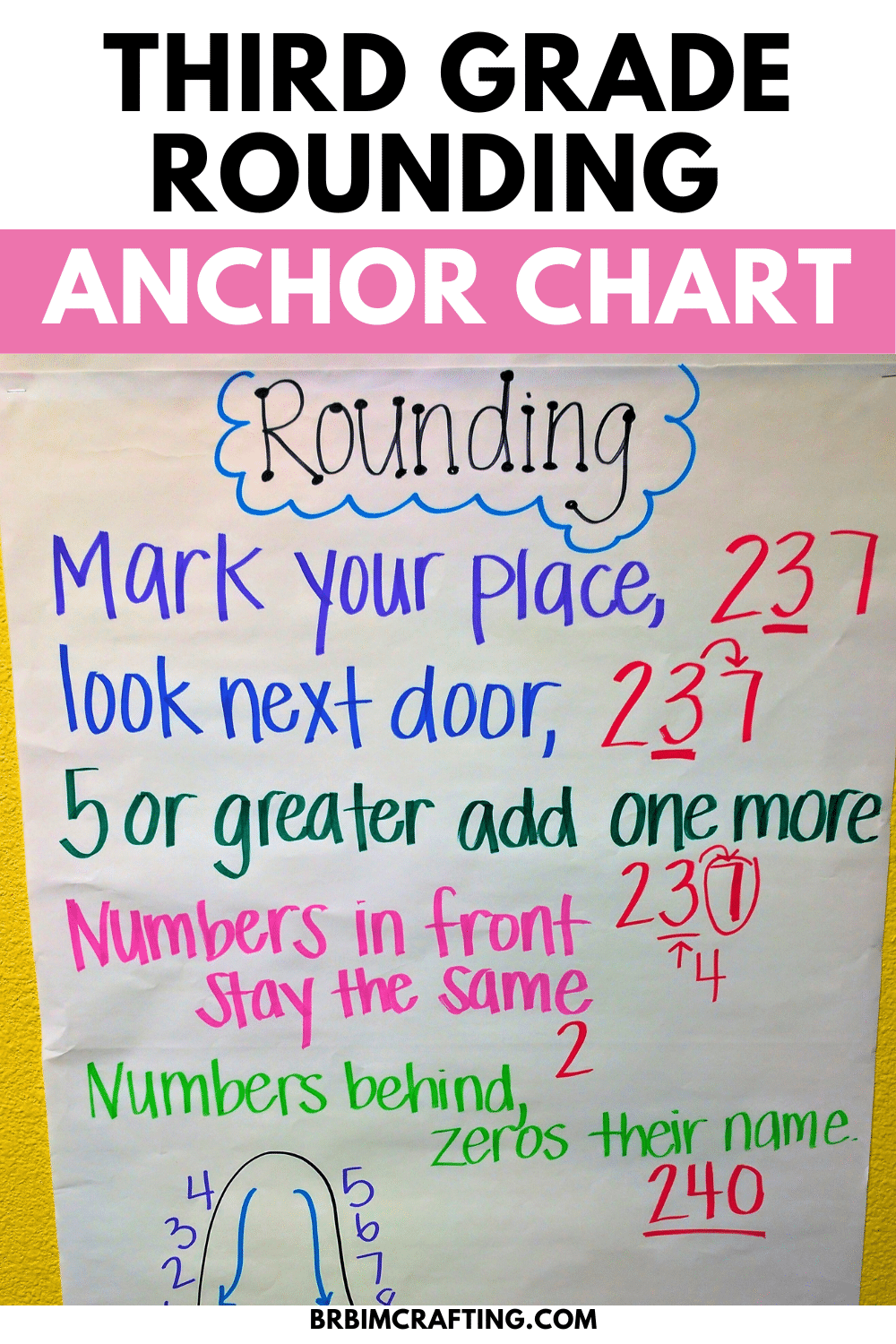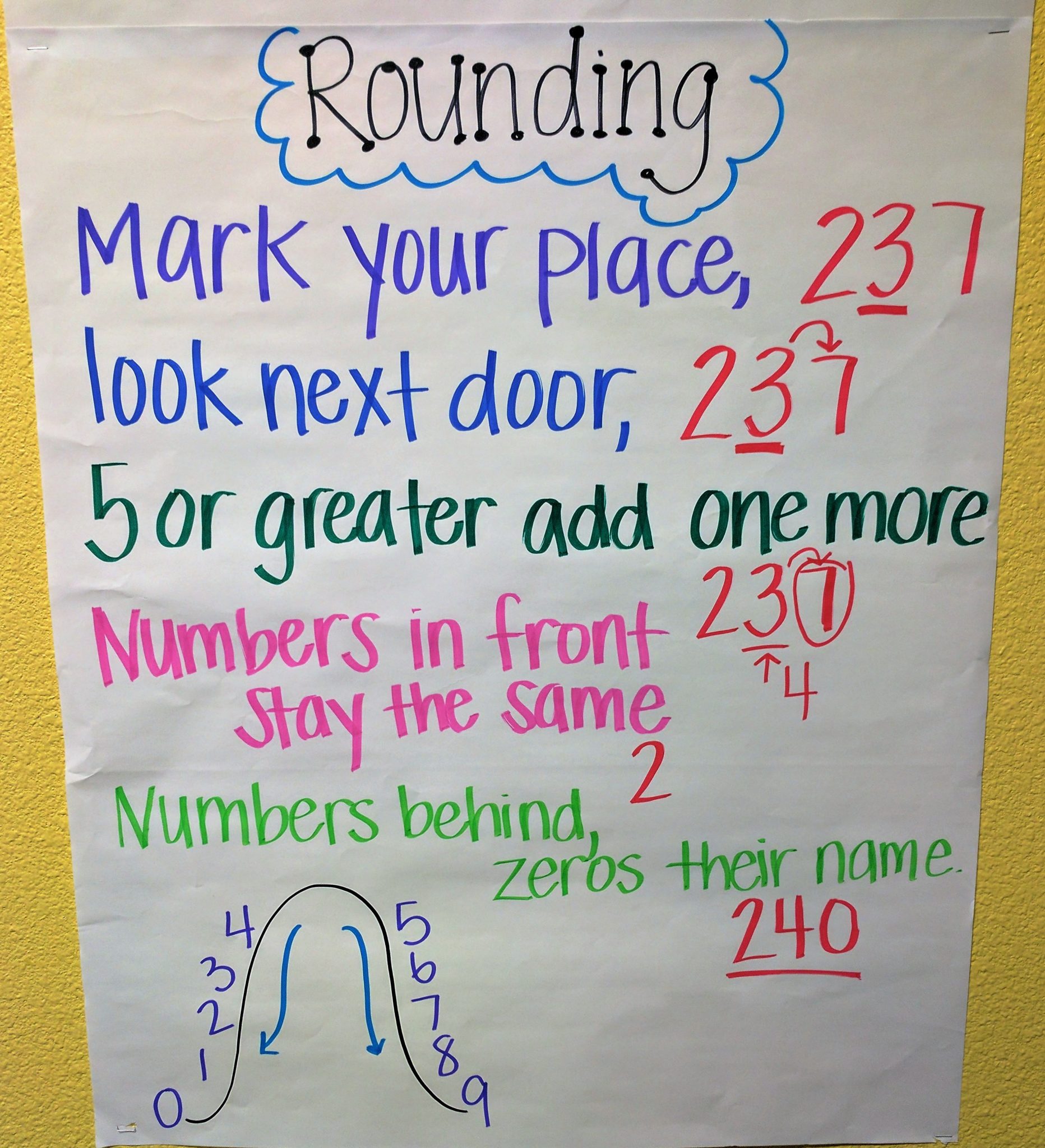Rounding Anchor Chart for Third Grade Math Classroom
This post may contain affiliate links, which means I’ll receive a commission if you purchase through my links, at no extra cost to you. Please read full disclosure for more information.
I love this rounding anchor chart I have hanging in my classroom.
Why, you ask?
Rounding numbers is one of the hardest modules for my third graders.
They have so much trouble understanding the entire concept of “rounding a number to a nearby value.”
Not to mention, third grade is the first year they are introduced to the concept.
I have tried every single saying and method that I can find online or think of, but ultimately, I keep coming back to this rounding anchor chart for my third graders.

How I Teach Rounding To My Third Graders
Luckily, rounding numbers is one of the first things we go over at the beginning of the year.
This leaves us with the rest of the year to review if they don’t immediately grasp the concept.
Over my years of teaching, I’ve found that if I place an anchor chart on the wall year-round, the students continually refer back to it as a reminder, reinforcing the concept.
I always catch my students staring at the wall where the rounding anchor chart used to be during state tests. This also goes for all of my other math anchor charts–way to go kids!

My Rounding Anchor Chart Chant
1. With rounding whole numbers, I always tell my students to first mark their place. (Putting a small underline under the second to last number helps them visualize the process a little better. It also helps them understand place value.)
2. Then, look right “next door” to the number after the marked number.
3. If it’s five or greater, add one more to the marked number.
4. The numbers in front of the marked place value will stay the same in all cases of rounding. Numbers behind, will always have zero as their name.
While not part of my chant, I’ve also included a number line on a hump to show four or below rounds down while five or above rounds up.
Don’t Forget the Why of Rounding
This anchor chart should not be used instead of teaching the students about “why” the number rounds to what it does.
Catchy phrases are great, but if they forget the rhyme and don’t have the basics down, they’re in trouble!
Advice on Making the Rounding Anchor Chart
If possible, try not to create the anchor chart on your own without the students.
Instead, after teaching them the purpose of rounding, I would then create the anchor chart with them together.
As you are creating it, as a class, go through each step together.
Students are much more likely to use anchor charts if they are a part of the process of creating them. (Although, if you are a perfectionist, like me, create it as a class and then create the same one later on, but a little neater.)
This combination of a few little sayings seems to have the greatest effect on third grade students remembering how to round.
It is so much fun for them to remember as well. Also, if you look up rounding online, you can find a ton of different rounding videos.
Maybe this chant and rounding anchor chart will work for your students as well.
If not, what method worked best for you?
And feel free to read more about teaching tips and tricks!
